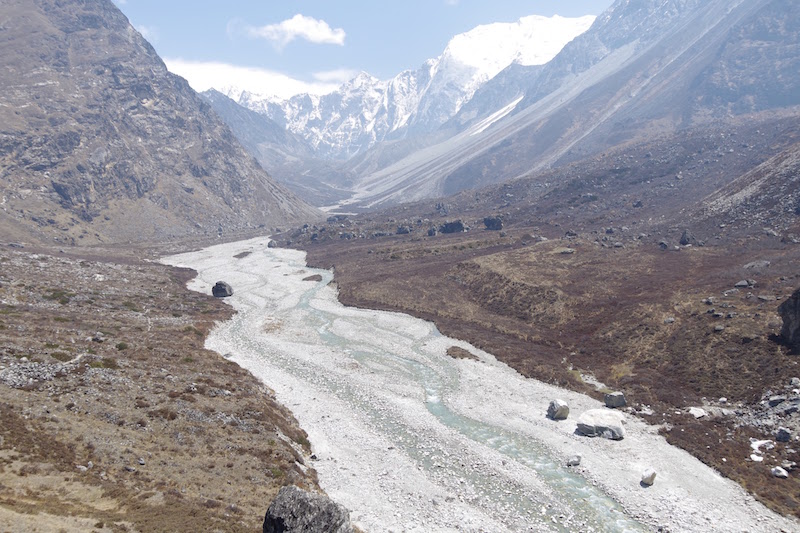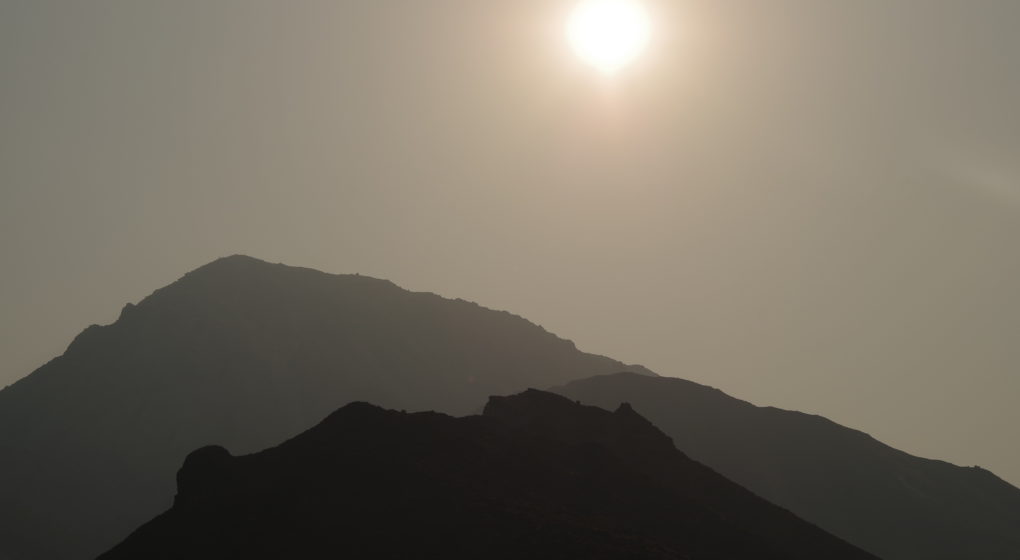
Dorjee handed me the glass and smiled. I tried my best to smile back.
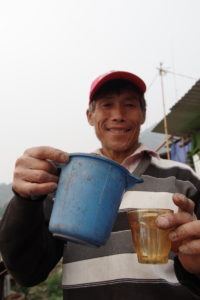
It was late afternoon in Briddim, a tiny village perched on a grassy Himalayan slope in Nepal’s Langtang Valley. And apparently, it was also time for a drink.
My wife Shawneen and I had just started our 9-day trek through the valley when we ran into Dorjee — a quiet, ever-smiling man wearing a tattered ball cap. And within minutes, he was pouring us each a glass of raksi — a rice-based liquor Dorjee brews himself with a lab-like collection of stills, jugs and tubes that sits outside his home.
I looked down at my yellow-tinted glass — dotted with mysterious black flecks — and thought about the urban legends I had heard about folks going blind after chugging homemade moonshine. Then I looked up at Dorjee’s grin-etched face, waiting in anticipation.
I tossed the shot back.
It burned. Tasted something like a hybrid between homemade wine and vodka. But it actually wasn’t too bad.
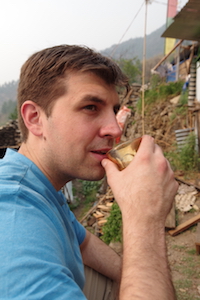
And I could still see.
We politely turned down a second drink and a subsequent offer of crackers. But Dorjee’s generosity was certainly not lost on us. Especially considering the challenges that he — and everyone else in the valley — were struggling with.
“I asked him to come with me back to Kathmandu, where he can work,” said our guide Tsering Sherpa, who grew up in Briddim. Dorjee is his brother-in-law. “But this place is dear to him. So he’ll wait for his home to be rebuilt.”
We were trekking in late April of 2016 — almost exactly one year since an earthquake tore through Nepal. Few places were hit as hard as the Langtang Valley. This is where 41 foreigners and 175 locals were killed in a quake-triggered landslide that buried an entire village.
Tourism across the entire country was still reeling after the disaster. And while one of our goals for trekking this route was certainly to help the local people, we were also motivated by something much more selflish: knowing that we’d have one of Nepal’s most thrilling trekking routes practically all to ourselves.
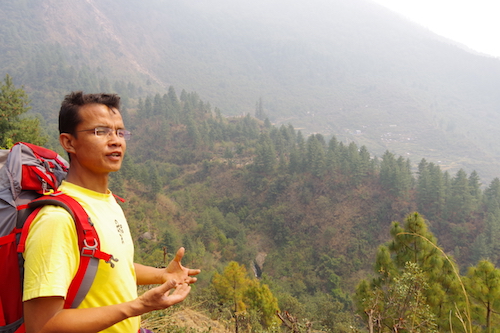
Our guide Tsering Sherpa, who grew up in the Langtang village of Briddam, tells us about his homeland.
After a few drinks with Dorjee, Tersing guided us through the village he grew up in. We walked past the slope-hugging homes, as hammering and sawing rang out over the metallic clang of hoes plunging into the stone-filled soil.
As we headed deeper into the valley, an old man sitting outside a ramshackle hut cried out to us and waved.
“Heyo!” cried Tsering in return. His always bright smile even wider now.
“They’d like to invite you in for tea,” he said.
We ducked inside their single-room home and met Phurbu and her husband Ngawng. Both farmers who have lived in Briddam long before the Langtang Valley started luring trekkers out this way.
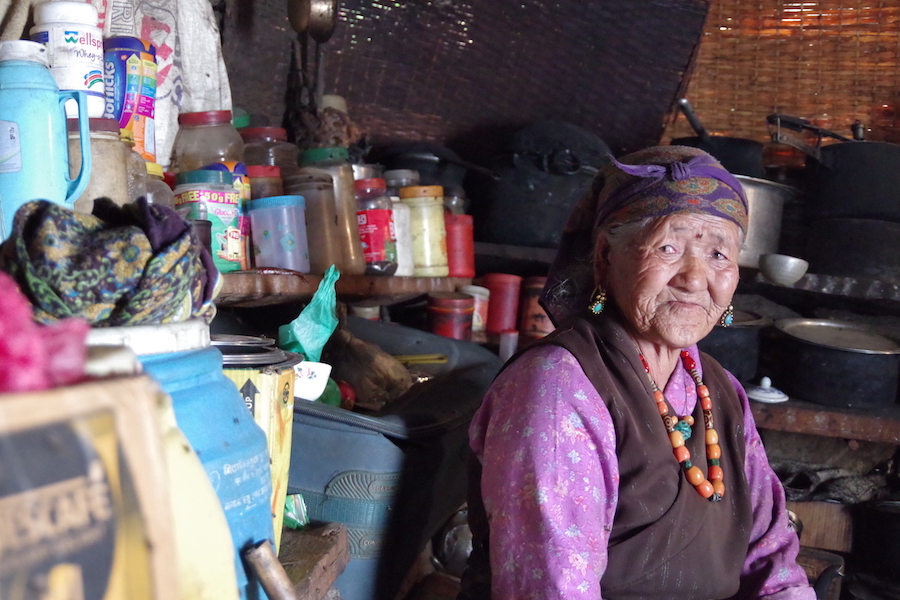
Phurbu in her home in Briddam.
Through the hearth smoke, we stared at each other. Smiling, but at a loss for words.
There’s only so much you can say through a translator.
“When trekkers pass-by, they wonder ‘what are their lives like? Where are they from?,” said Tsering, happy to play the interpreter between us. “They wish they could talk to you more easily,”
We wished we could could talk to them too. But as I sat there, defending my sugar-sweet tea from the clouds of flies, I couldn’t help but get excited about what the rest of the trek held for us.
Yet at the same time, I was a little nervous about exactly what we’d find once we arrived at the buried Langtang Village.
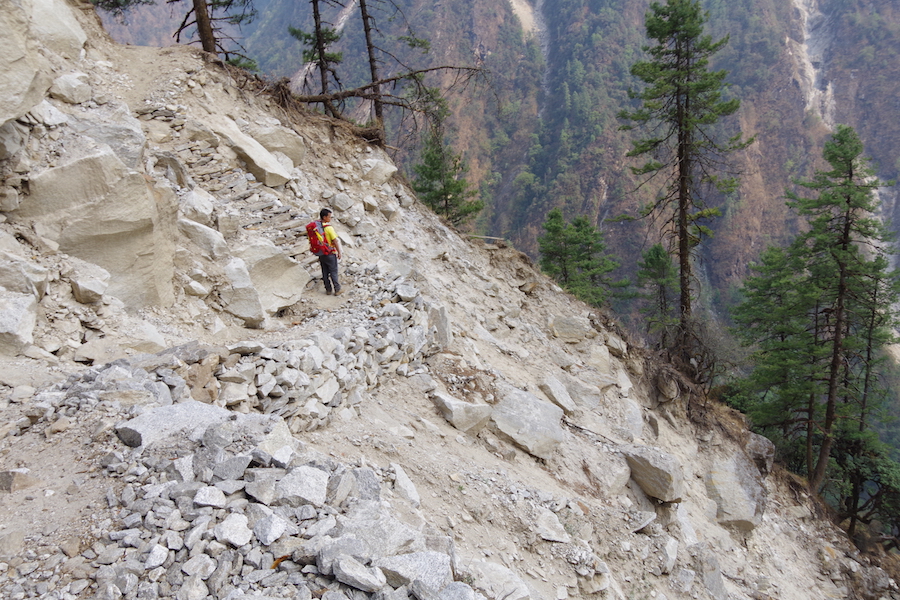
Our guide Tersing Sherpa trekking along a section of the Langtang Valley trail that was rebuilt after the 2015 earthquake.
The morning mist was still burning away when we set off the next morning. Trekking through lush rainforest and gradually climbing higher toward the alpine.
Along the way, Tsering pointed out quake-triggered landslides in the horizon. They looked like the result of tiny explosions against the massiveness of the mountains.
It was Tsering’s first trip back to the Langtang Valley after the disaster. Stretches of the trail had been rebuilt, he said. It’s easy to see where.
Giant swathes of the mountainside are covered in jagged boulders. You can see where members of the Langtang Reconstruction Committee had worked to store-up cliff-hugging sections of the trail.
Along the way, we passed through smaller villages. And despite the scenery being mired by collapsed buildings, people were still just as welcoming as they were in Briddam.
Residents were happy to put down their handsaws (no electricity, of course) or hammers and chat with us for a few minutes. Always smiling, despite the fact they were still without proper homes more than a year after the quake.
We didn’t encounter any other trekkers the entire day, until we arrived at Lama Hotel — a collection of lodges that was spared from last year’s destruction.
That night I met with Nima Chhiring Tamang, a 22-year-old resident of Langtang Village: the village worst hit by Nepal’s earthquake. In total, 185 Langtangpas and 45 trekkers were killed on April 25, 2015 when a quake-triggered landslide covered the entire community.
Nima lost his mother and father in the landslide.
“If I had been here, I would be finished,” Nima told me as we relaxed outside our teahouse.
Nima has been guiding for the past five years, a trade he learned from his father. But like all children of the Langtang Valley, he spends 10 months of out of the year going to school in Kathmandu.
“There’s not much opportunity for us here.”
The next day, I’d experience exactly what Nima meant by that.
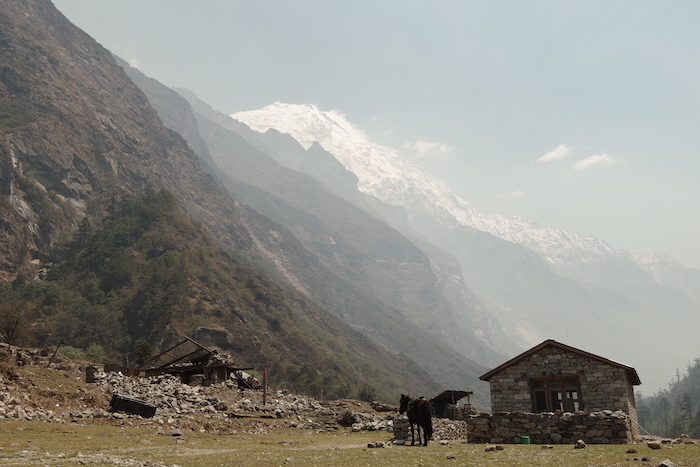
The valley just outside of Llama Hotel.
Climbing up away from the steady drone of the Langtang Khola River, we pressed passed tropical trees and lemon-scented brush. The late-April heat was steady as we trekked up beyond 3,000 metres above sea level.
The thin air took its toll on our legs as we pushed past the tree line into the apline. The wind picked up. The air had a chill to it.
Nima lead the way as the gargantuan Himalayans came into full view against the misty-blue sky. Pink rhododendrons lined the path, as the greenery gradually evolved into a blanket of alpine gray.
Just a handful of trekkers shared the trail with us that morning. One of them was a veteran mountaineer from Norway, who had trekked the Langtang Valley just a couple years ago.
“I wanted to see what it was like after the earthquake,” she told us over tea. “I’ve trekked them all — Annapurna, Everest Base Camp — but in Langtang, it’s quieter and more serene. Especially now.”
We kept a steady pace. The Langtang trek isn’t especially strenuous, but it does come with one unique hazard: it’s tough to keep your attention on the narrow, cliff-straddling path in front of you when your eyes are drawn to the mountain scenery in the distance.
Finally, we trekked up a small incline that looked out over a small valley filled with stones.
Nima stopped and pointed below.
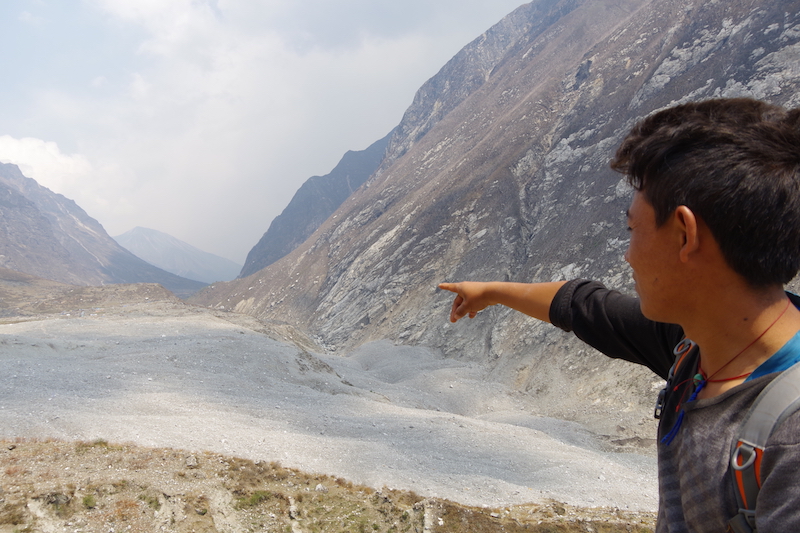
“That used to be Lantang,” he said, in a cold, matter-of-fact tone.
“Both my mother and father died here while I was in Kathmandu — buried by the landslide.”
We stood there for a moment, speechless. I remembered reading headlines about Langtang after the quake. I had seen the before and after shots as well.
It was a tough scene to absorb.
But it’s even more disturbing to walk the path that takes you through the disaster area — knowing that you’re trekking over rubble and debris where bodies still lay buried.
Remnants of the old Langtang village are everywhere: half a shelf lined with pots, tattered pants, a perfectly intact door. All set against a backdrop of stone and silence.
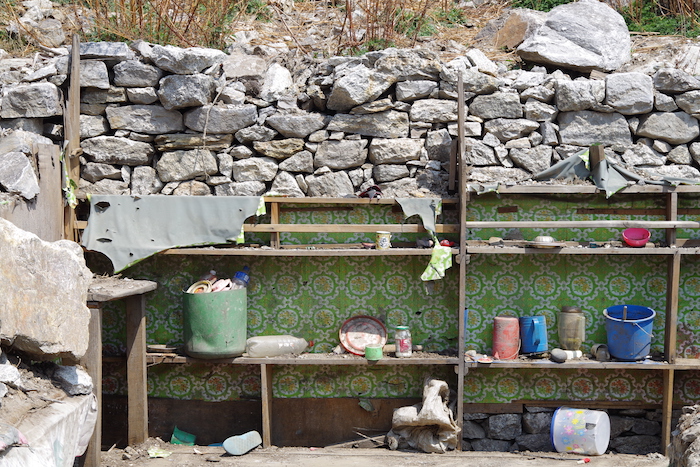
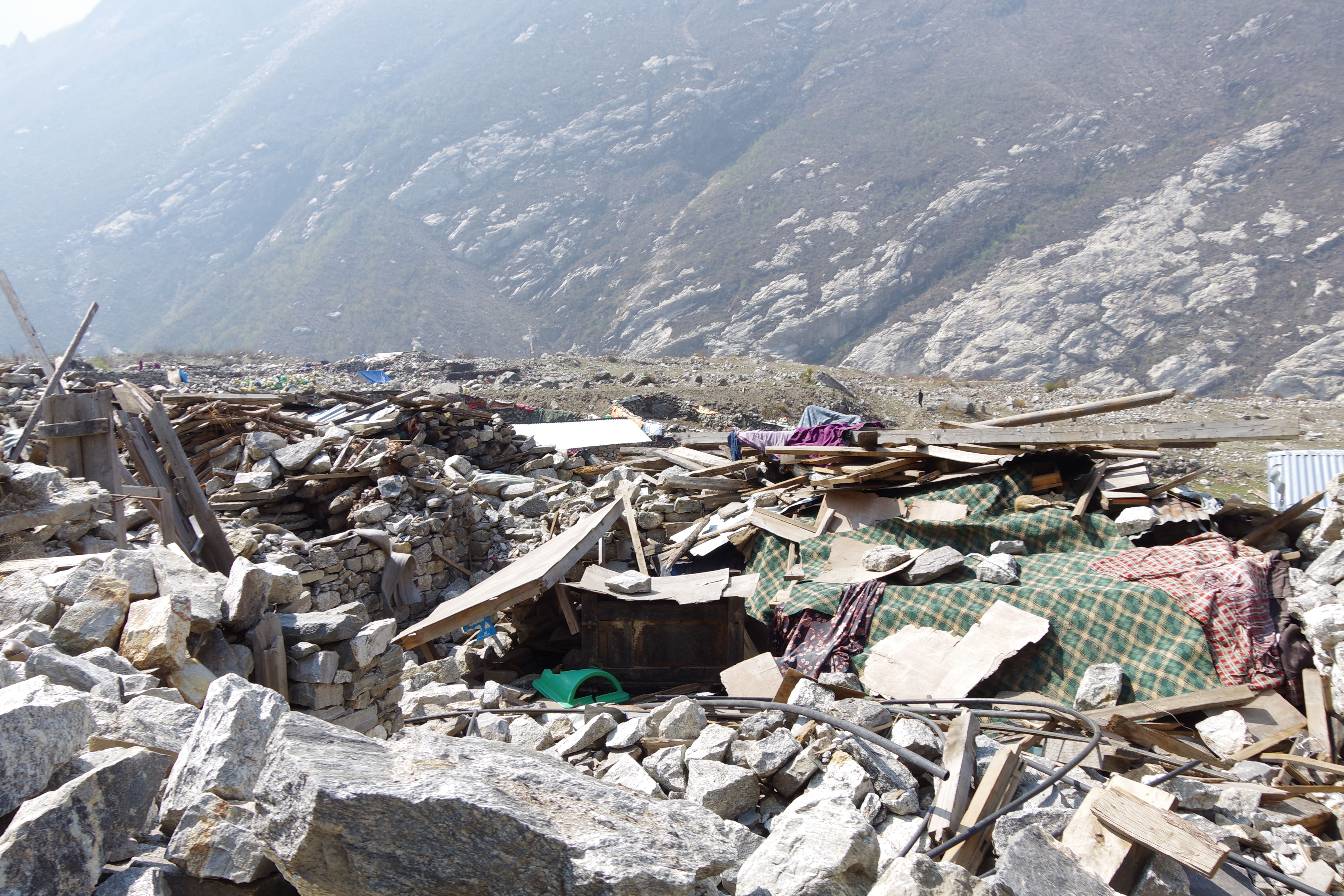
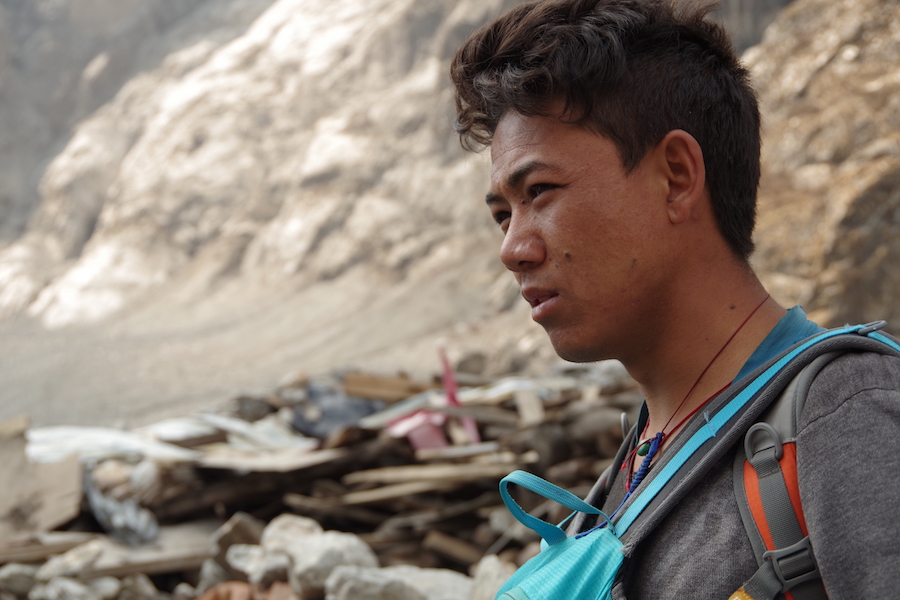
Nima’s family home was levelled by the landslide. He hopes to rebuild within a year.
After an uncomfortable 20-minute hike, the isolation is broken. The sounds of hammering and sawing became louder as the area where Langtang is being rebuilt comes into view.
Nima is greeted by an old friend as walks along the rubble-strewn streets. A woman huddles under a blue tarp-covered stone hut. A man hammers away at the stone remains of a house with a sledge hammer.
Life is rebuilding in Langtang. Slowly.
My wife and I exchanged awkward glances — we both felt out of place here, as if we’re intruding. But we didn’t feel that way for long — Nima leads us to the New Langtang Lodge, where we met his long-time friend Dawa Nurpu Tamang.
Dawa was on a break from college in Kathmandu. His parents opened the lodge up just six weeks before we arrived.
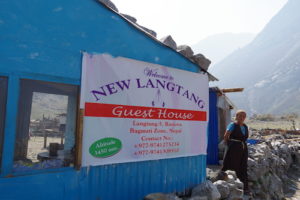
“We want to keep Langtang as a central place, just like before,” said Dawa, while sitting inside the humble dining area of the 3-room lodge.
Shawneen and I took one room that night — an insulated shed-like cabin with no electricity. The other two rooms were occupied by members of Samaritan’s Purse, who were there to help teach the residents the skills needed to rebuild their homes.
As I lay down and waited for sleep to come, I heard Dawa’s mother singing just outside our room. It was an upbeat song. Full of energy and hope.
Despite the cold, I slept well that night.
If you’d like to help the people of Langtang as they continue to rebuild, drop by the Langtang Disaster Relief Fund website.
If you’re considering a trek through the Langtang Valley, consider hiring Tsering at Incredible Himalayan Sherpa Adventure as your guide.
More images from the Langtang Valley Trek….
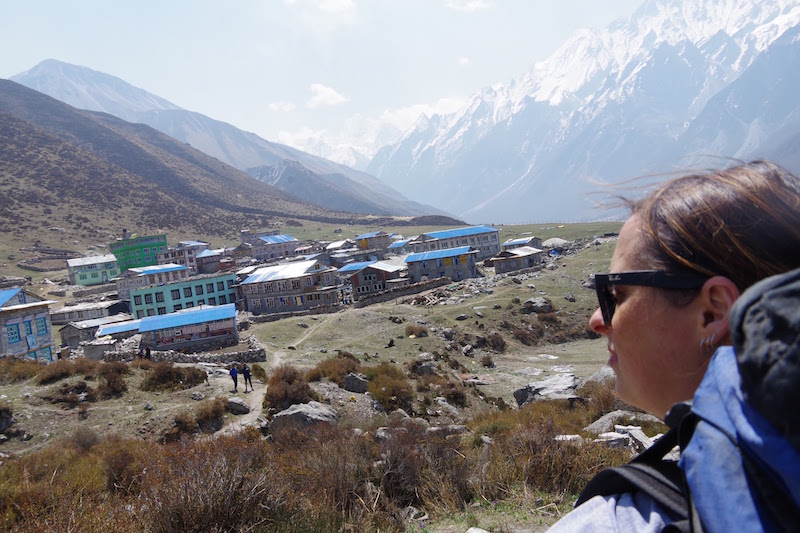
Shawneen looks out over Kyanjin Gompa, the last village on the Langtang Valley trek.
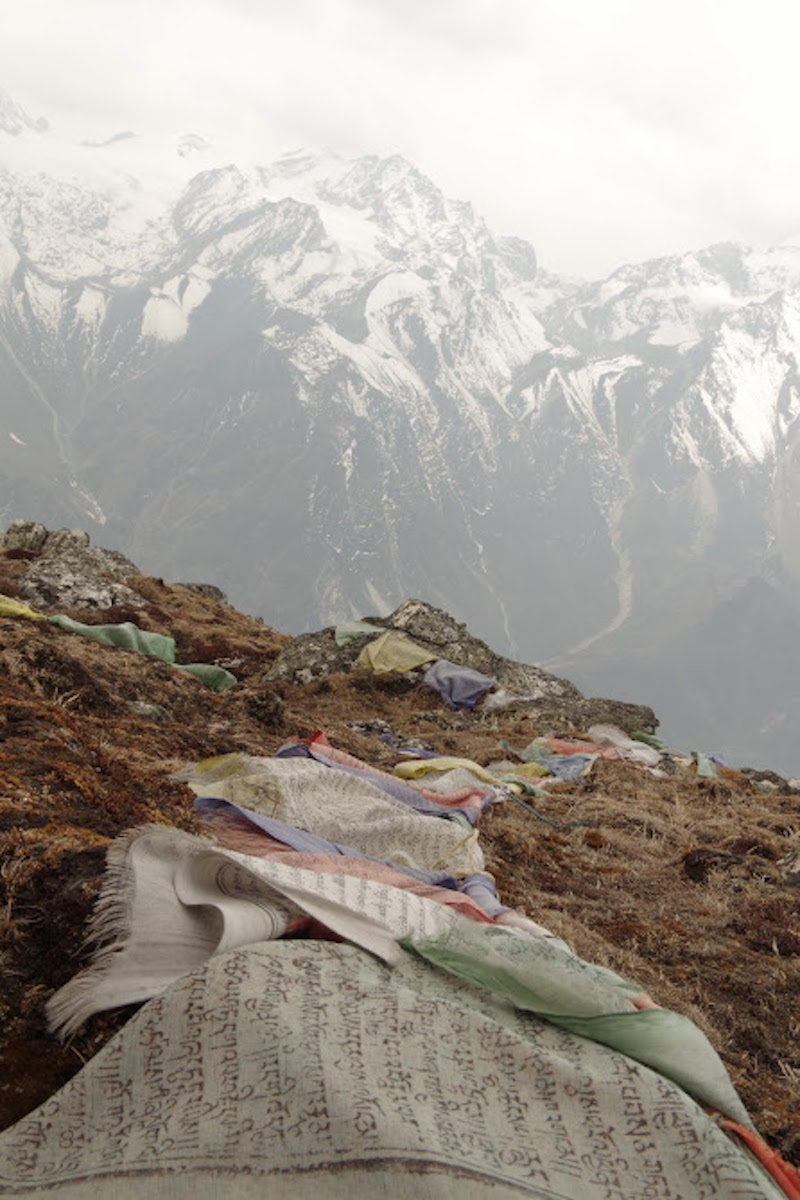
A prayer flag at the top of Tsergo Ri (4980m).
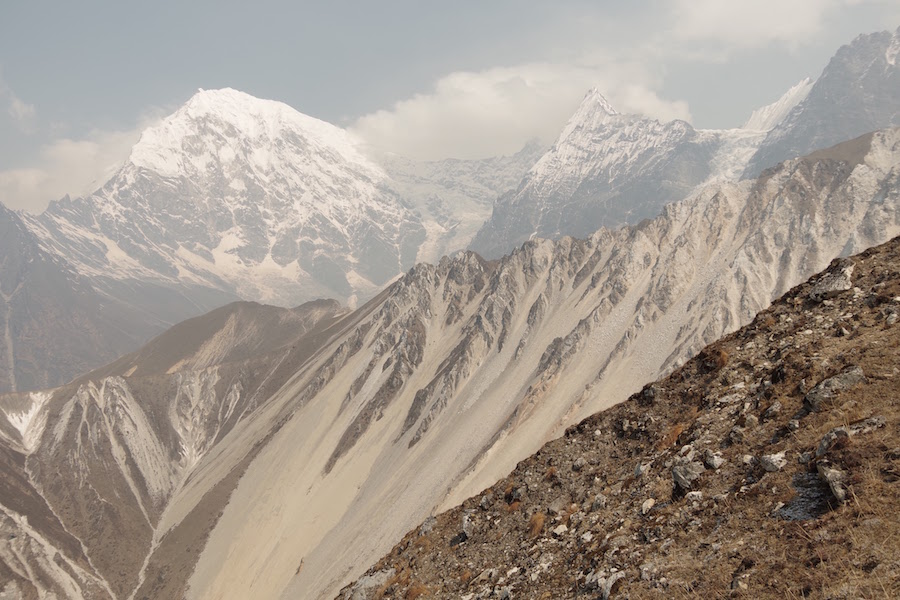
Panaoramic view of Tsergo Ri.
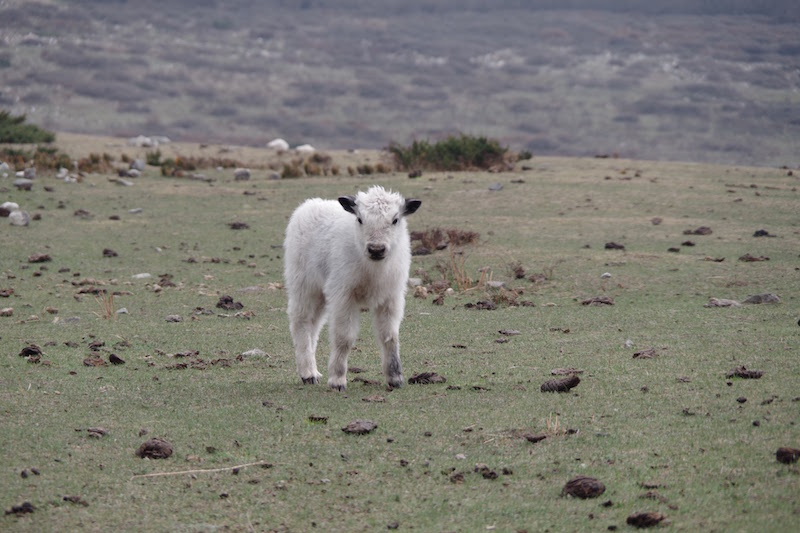
A baby yak on the route to Langshisha Kharka.
